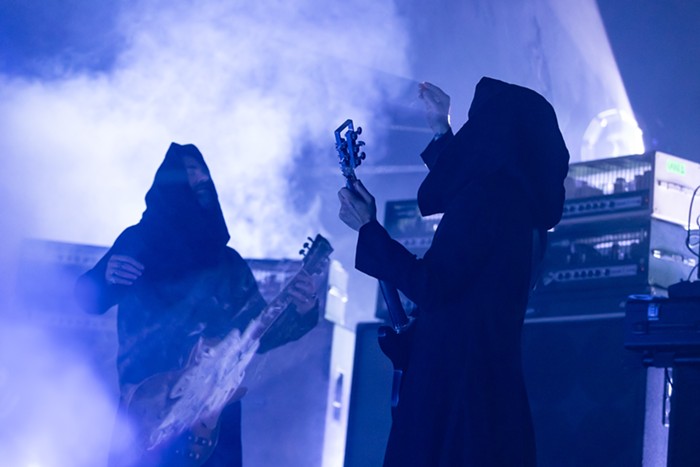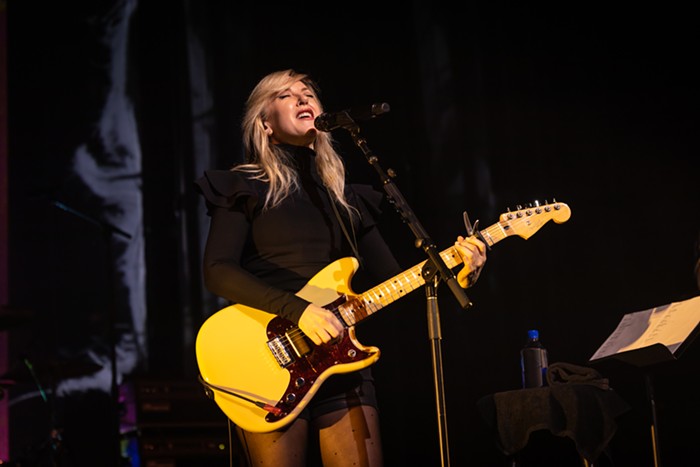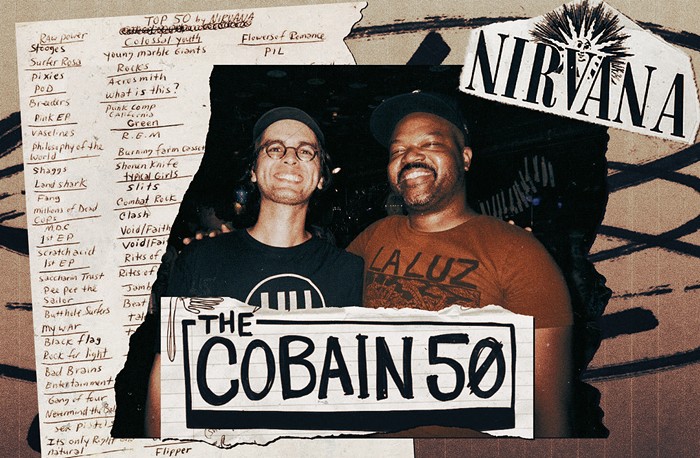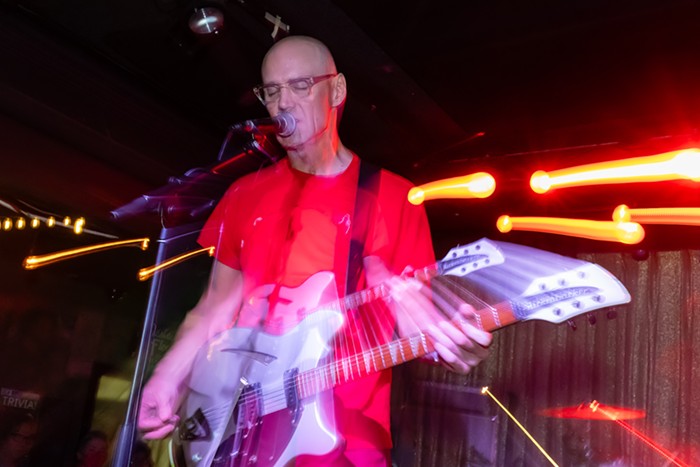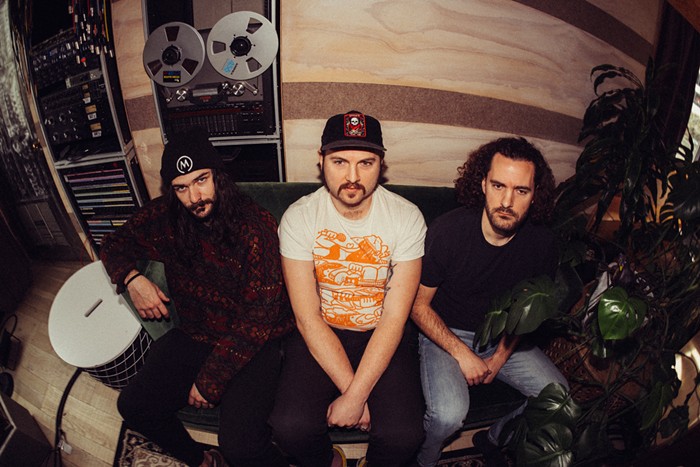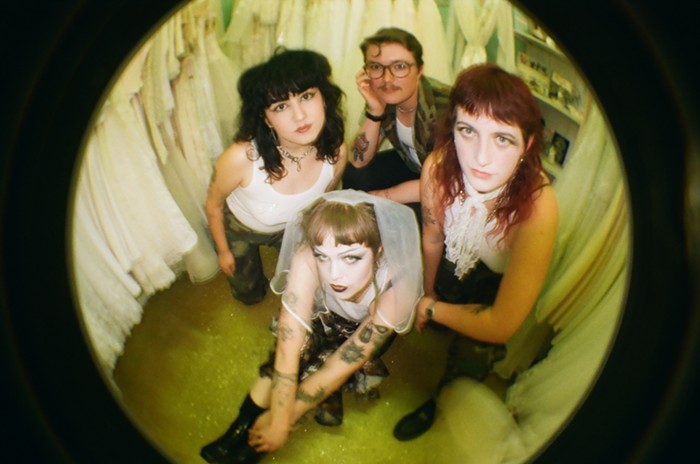
The first few beats of "Pumped Up Kicks" are a guaranteed throwback to the summer of 2011, when Foster the People's original demo found its way to No. 3 on the Billboard Hot 100.
Since then, Mark Foster remains the only original member left in the band, and his battles with addiction, politics, and writer's block have run rampant through subsequent albums. Nearly seven years after the release of their first record, Torches, Foster the People returned with their third record, Sacred Hearts Club, in July. Moving away from their regular producers, Foster and bandmate Isom Innis took production into their own hands to craft their most beat-driven record yet.
Mark Foster couldn't make it to our interview due to some pretty intense flight delays (I bet he was flying United!), but I chatted with the rest of the band at Bumbershoot to learn more about the making of Sacred Hearts Club. An added bonus: keyboardist Innis, guitarist Sean Cimino, and drummer Mark Pontius also disclosed information about their Blue Man Group-inspired drum jams and if they thought Sid killed Nancy.
Mark Foster and Isom Innis self-produced Sacred Hearts Club, how did that experience differ from working with outside producers?
Innis: When we started the record, we weren't necessarily recording an album—we didn't really know what it was going to be. We went into the studio early on and got to purge musically, and we had time to follow an idea wherever it was going to go. Over the years we've produced different artists together, so it was really nice starting it together, and feeling free to not really take up anyone's time. Definitely, for us, we played the studio like an instrument. New ideas came from certain sounds we were getting and the way we were sonically arranging things—production really became part of the creative process.
At what point did you know you were ready to bring other people into the equation?
Innis: I think when we were so close to each idea and we needed someone. I mean, it was right there in our faces for so long, really for like a year and a half, and we needed an outside ear. We needed someone that we trusted to say, "Hey, maybe this section doesn't need six synth parts and 10 drum fills, maybe just stick with this one part" [laughs].

Sacred Hearts Club is the first album with an actual photo on the cover. Why?
Pontius: We talked a lot about it when we were making Supermodel. We had a big discussion, and we thought at the time that we were gonna be doing that for every album we ever made. We have a friend that did a lot of that art and we were like, "He's our guy." But then, when it came time for this one, it just didn't feel as organic and natural for us. It felt like it was time to do the photo thing and make a confident step into a new chapter.
I know Mark traveled extensively before Supermodel. what was the inspiration before Sacred Hearts Club?
Innis: I know that it stems from a trip he went on to Burma [Myanmar]. He tells the story so well so I don't want to take the words out of his mouth and butcher it, but the meaning of Sacred Hearts Club is group of people who celebrate life to the fullest, but aren't afraid to exist outside of societal norms. It really became the mantra of the recording process.
“SHC,” a song on Scared Hearts Club, was that from around the time that Supermodel was recorded?
Innis: It was actually pre-Supermodel, and the foundation of that track was this drum loop that I cut out of performance from Mark Pontius, at this jam session we did in Sunset Sound Studio 3, the infamous studio where Prince recorded a lot of his records. In between Supermodel and the Torches tour, we went in and just had this drum... jam [laughs]. It was our version of the Blue Man Group, maybe just a little bit more rock and roll [laughs]!
We recorded all this material and it took us years to sift through it. A lot of the songs on Sacred Hearts Club were born from me showing Foster a beat that I had made, and he would take that and respond musically. “SHC” was cool because it came out of a jam that we did as a band that I just cut up showed it to Mark, and he ended up writing the bass line and going in and nailing the vocals in almost one take.
You all release lots of additional videos, photos and artwork along with your music. How important are other forms of art in connection with the music?
Cimino: Anything visual tells such a story without words. I think speaking that language as much as possible, on par with the music, is our goal. [We want] anything we put out, like album artwork, videos, behind the scenes, to be just as great as the music, so that it can tell other stories and get people stoked about how they approach listening to music.
Innis: I feel like art, especially abstract art, is almost a metaphor for our creative process. Especially in Sacred Hearts Club, when we were making this record, the way that we were experimenting and improvising to try to build ideas up before they were fully fledged songs, you're just throwing paint at a canvas. You're just following your instinct, and you might not know what you're doing. You're just throwing ideas.
Did Sid kill Nancy?
Pontius: I honestly don't know enough, so I'm just going to say, yeah.
Cimino: No comment.
Innis: I like the conspiracy theory that he didn't kill her, and that she overdosed and stabbed herself, or accidentally stabbed herself, and that they had come up with a suicide pact together. After Sid took his own life, a note was found in his jacket and it was a suicide pact.... I don't know. But right now I side with, he didn't kill Nancy and he was just being loyal to their suicide pact.
